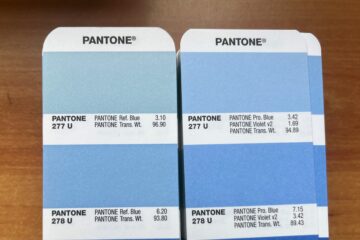Harvard Business Review | by Jonathan Z. Zhang
The costs of digital advertising are skyrocketing. By some metrics, prices on major platforms such as Meta, Google, and TikTok grew by anywhere from 61–184% year-over-year in 2021. At the same time, returns are plummeting; recent changes in privacy policies, such as those by Apple, have made it more difficult to target ads to consumers, who are increasingly likely to tune out the advertising that they see anyways. All of these trends are making digital advertising increasingly unprofitable and ineffective, forcing companies to rethink their marketing strategy and spending.
Increasingly, companies that are rethinking their strategies are turning to an analog method: physical paper catalogs. And it’s not just traditional retailers that are increasing their catalog investments either. Even online disrupters such as Amazon, Bonobos, and Wayfair have entered the catalog game. But does this mean that every retailer should consider a direct mail strategy? If not, when does it work best?
To investigate these questions, we conducted a series of field experiments in collaboration with two large retailers — a luxury watch e-commerce retailer and a multichannel department store chain that carries a variety of products. The results extend our earlier findings of catalogs’ general usefulness into a set of specific guidelines that can help retailers leverage their existing customer data to design targeted and effective catalog marketing strategy.
Our research took us in three directions.
First, we wanted to test whether all product categories are suitable for catalogs — if vividness and emotional connections are key, as our previous research found, then theories would suggest that hedonic and experiential products will benefit more from catalogs than utilitarian products.
Second, we wondered how consumers of different shopping mediums differed in their preferences and decision-making styles. Just like some of us prefer the sensory richness of the physical stores while others prefer the convenience of e-commerce, past research has indicated that consumers also differ in their “need for touch.” Do certain brands or products align with these consumers?
Finally, while visually-stunning images can elicit strong emotion, texts can provide valuable information. So, we wondered, what is the optimal balance between images and text?
Our findings can help retailers who either have a catalogue strategy or are thinking of one, or may help retailers without catalogues to consider their merits — and drawbacks.
Who are catalogs good for?
Because our first round of research predated the Covid pandemic, we were able to compare people’s responses to catalog marketing between 2019 and 2021 and investigate the effect of the pandemic and changed lifestyles on consumer response.
In the first set of field experiments with the e-commerce retailer, we sent out a new catalog campaign at the end of 2020 to 8,600 U.S.-based customers. Over a six-month experimental period, those who received catalogs in addition to emails resulted in a 24% increase in purchases over those who only received emails, indicating a lift of 870% ROI. This ROI is a 45% increase over the already impressive 600% ROI found in 2019. In follow-up interviews with customers, they told us that during the pandemic they had more time to peruse catalogs and that they welcomed the distraction from screens.
This finding leads us to believe that the audience for catalogs is growing, even as the pandemic subsides. The emerging remote/hybrid work culture and consumers’ increased screen time will make analog experiences such as catalogs increasingly appealing and effective. But should catalogs be sent to everyone?
In the second set of studies, we partnered with a multichannel department store chain that sells various product categories (both hedonic and utilitarian) across its physical stores and website (with annual revenue exceeding $1 billion). We conducted a series of field experiments to assess catalog campaigns’ customer and design factors.
The multichannel retailer’s database allowed us to first put all the customers into two groups — those who made over 50% of their past purchases in physical stores (“physical-prone”) vs. those with over 50% of their past purchases online (“e-commerce-prone”).
Then, we sent identical catalogs to both groups. We found that the ROI of catalog marketing on physical-prone customers is 60% higher than e-commerce-prone customers. These results make intuitive sense — store customers have a higher preference for haptic and sensory experiences, and catalogs provide an extension of these experiences.
A picture says a thousand words, but only if it includes text.
With the same e-commerce retailer, we tested two designs for catalogs: photos with minimal texts except for product name vs. photos with main product attributes and complementary short narratives that describe the usage occasion (e.g., “perfect for a summer vacation in the Mediterranean”).
Results show that while both designs are effective compared to not receiving the catalogs, designs with photos and narratives are 40% more effective in sales and customer engagement than designs with only photos and product names. Surveys with customers show that they keep these catalogs for 12 days in the former case instead of six days in the latter case because they need to spend more time reading and digesting the materials. They also learn more about the product as a result.
Thus, while high-production photos are key to catalogs’ success, the results show the importance of a design strategy that employs both photos and text for emotional and informational appeal.
Catalogs should feature hedonic and higher-priced products.
The diverse product categories from our department store chain also allowed us to see which products are most responsive to catalog marketing. Results show that catalogs featuring hedonic products have 120% higher marketing ROI than utilitarian products, consistent with psychological theories. Higher-priced products also achieved 50% higher marketing ROI compared to lower-priced products.
The finding that catalog’s effectiveness is product-type dependent can help explain why while many hedonic and experiential brands such as Birchbox and Lego are implementing catalog strategies, many traditional utilitarian brands such as Ikea have discontinued them.
Are catalogs right for you?
Whether or not you should pursue a catalog strategy is a question that deserves significant thought. We wouldn’t advise jumping straight into catalogs just because digital marketing has become more complex. But sending out correctly designed catalogs to the right customers to maximize effectiveness and minimize waste in terms of marketing dollars and environmental impact seems to make a lot of sense.
For e-commerce retailers without physical stores, catalogs can effectively mimic stores’ sensory experiences to enhance customer affinity. For multichannel retailers, by understanding the channel preferences of current customers through transactional data, multichannel retailers can add an effective catalog marketing channel to their store and e-commerce channel strategies.
As retailers and brands increasingly compete beyond mere performance attributes to win the hearts and minds of consumers, they ought to think carefully about the aesthetic design aspects of their marketing programs. High-quality physical catalogs with stunning imagery combined with compelling narratives can create the sensory awe that would be hard to replicate on a digital screen. These sensory experiences can then lead to long-lasting impressions and stronger relationships with customers, and translate competitive advantage for the company.


